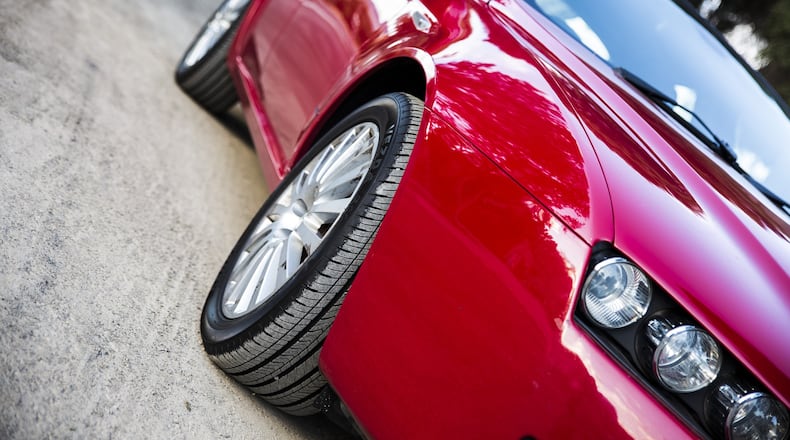Something just seems off about the idea of buying a teenager a new car. In fact, even a teen driver somehow saving up the tens of thousands needed to score a late model ride has been ill-advised. Someone that young doesn’t appreciate something that valuable. An inexperienced driver could ruin the sparkling new car with their reckless ways. But newer cars may now be the best choice for the newest drivers for several reasons.
The safety technology built-in to new vehicles in the past decade is downright impressive. Front and rear bumper sensors help decrease collisions. Backup cameras and the attached alerts do the same. Blind-spot monitors discourage risky lane change and associated contact. Lane departure technology at the very least snaps a driver back into reality so they correct and stay on the right path. The more advanced versions of these features actually deploy automatic steering and braking corrections, as opposed to simply nudging the driver’s behavior.
The Insurance Institute for Highway Safety (IIHS) released some stark numbers and observations recently about just how much more likely teens are to crash or die than adult drivers. Their findings also show how much technology can alleviate teen crashes, injuries and deaths.
IIHS reports that, based on per mile stats, teens are four times more likely to crash than drivers 20 years old and above. That is a hair-raising difference that, sadly, makes sense. Teen drivers are more reckless, so speeding, driving distracted, not wearing seatbelts and driving impaired are all more likely. And, even in normal circumstances, an inexperienced driver is more likely to over-correct or press their vehicle too hard in poor conditions. They also don’t recognize hazards as quickly as an older driver.
High school-aged drivers are also more likely to die behind the wheel than any other age group, except for drivers over 80. Different reasons in both age groups can lead to that same fatal result.
Technology tailored specifically to parents and teens can mitigate these risks and problems. Different car companies offer monitoring programs and ways for parents to deploy speed limiters and ways to lock stereos and gear shifters when drivers don’t fasten their seatbelts. Those apps can also notify parents when teens try to drive outside of their curfew, as stats show teens are significantly more likely to crash or get hurt at night.
Researchers on behalf of IIHS analyzed wrecks from 2016-2019 that involved teen drivers. They specifically focused on wrecks where these built-in car safety technologies were relevant: front crash avoidance, lane departure and blind-spot monitoring. They also examined crash scenarios where three types of teen-focused features would have mattered: speed-limiters, nighttime curfew notifications and gear/stereo locks when seatbelts aren’t used. The results are stark.
IIHS has found that deploying these six types of technologies makes teen driving significantly safer. These features decreased or made teen crashes less severe 41% of the time. These aids also decreased the chance of teen injury by 47% and, get this, the chances of teen fatalities by a whopping 78%.
With all of this in mind, the traditional idea of assigning a teen driver an old beater in which to take their first solo driving reps may actually be a bad idea. I drove a 1981 Chevy Malibu in late high school and early college over 15 years ago when granted, those technologies did not exist in many cars. But now even a 10-year-old car may put a teen at a significant safety disadvantage if it lacks some of the above safety features.
Take into account that the used car market is absolutely bonkers right now. Used car prices are sky-high, as supply is far behind the demand in that realm. Dealerships are reaching out and making offers for people’s used cars, so there is money there to be had for people with extra cars. Likewise, in the rush to find a set of wheels for a new teen driver this school year, the once shoo-in idea of buying a used car for a teen makes little financial sense, too. For just a few thousand dollars more, a brand new car with the latest safety aids could be the perfect answer for a brand new motorist.
Of course, there are benefits to learning the art of driving without the fancy bells and whistles. A driver with a more analog-type of car means they have to rely more on their own senses and self-control, meaning those muscles will inevitably end up stronger. But considering the unmistakable effects of driving with safety and parental aids, the benefits of the latter outweigh the risks of the former. Maybe parents should now consider bequeathing the hand-me-down car to themselves and sending their student driver out in the new 2021 model.
Doug Turnbull, the PM drive Skycopter anchor for Triple Team Traffic on 95.5 WSB, is the Gridlock Guy. He also hosts a traffic podcast with Smilin’ Mark McKay on wsbradio.com. Contact him at Doug.Turnbull@cmg.com.
About the Author
The Latest
Featured

